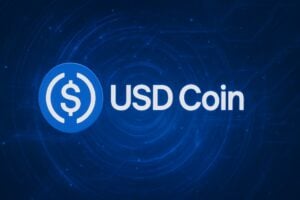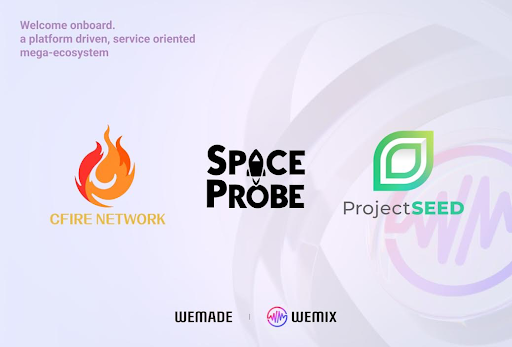Circle continues to forge strategic collaborations in the cryptocurrency sector to consolidate the spread of USDC, through new revenue sharing agreements with major exchange platforms. This policy, strengthened by agreements with giants like Coinbase, Binance, and more recently, Bybit, aims to incentivize the presence of USDC in the portfolios of global exchanges and to further increase the circulation of the stablecoin, which is now close to 62 billion dollars.
Circle and strategic partnerships: alliances for the growth of USDC
The recent partnerships of Circle with the main exchanges mark a turning point in the stablecoin environment. In particular, the company has established revenue sharing agreements that provide for the sharing of part of the interest obtained from the reserves that guarantee USDC. According to sources close to the company, every platform with a considerable volume of USDC deposited, including Coinbase and Binance, benefits from direct incentives from Circle.
This strategy fits into a context of growing competition between stablecoin, with Tether leading the market and new products like Robinhood’s Global Dollar entering the global arena. Adopting a revenue sharing policy allows Circle to stimulate the interest of exchanges, thus promoting the adoption and liquidity of USDC among traders and investors.
The agreements with Coinbase and Binance: shared benefits
The agreement with Coinbase has represented one of the most significant steps for Circle: the exchange receives 50% of the yields generated from the reserves of USDC. This constant revenue stream incentivizes the platform to support USDC in its services, contributing substantially to its expansion.
In the case of Binance, the pre-IPO documentation of Circle reveals that the Asian exchange obtained a one-time fee of 60.25 million dollars. Additionally, Binance continues to receive a monthly incentive proportional to the share of USDC held on its platforms, calculated on a percentage basis relative to a fixed SOFR rate. This mechanism differs from the agreements with Coinbase and suggests an increasingly customized partnership path.
The incisiveness of these incentives is reflected in the constant presence of USDC on the platforms, favoring greater liquidity and facilitating the exchange of the stablecoin for millions of users around the world.
The new agreement between Circle and Bybit: discretion and objectives
While the details of the agreement between Circle and Bybit have not been made public, informed sources confirm that the structure is similar to those signed with other leading exchanges. In this case as well, the objective is clear: to reward the holding of USDC on Bybit through a revenue sharing system, with the prospect of strengthening the competitiveness of the stablecoin even beyond the historical players in the sector.
The operation of these agreements often occurs quietly, but the result is tangible. The exchanges that adopt USDC as a reference asset obtain concrete rewards, contributing to the creation of an increasingly solid and varied stablecoin ecosystem.
Stablecoin: a global challenge between innovation and competition
The stablecoin sector is currently experiencing a phase of intense competition. USDC has reached approximately 62 billion dollars in circulation, consolidating itself as the second market force after USDT (Tether), which holds over 160 billion dollars in supply. However, the race for adoption is not limited to the two historical protagonists.
New projects like Robinhood’s Global Dollar aim to integrate revenue sharing mechanisms directly into the token structure. This approach seeks to make holding the stablecoin even more attractive, surpassing traditional models and actively involving all participants in the ecosystem.
Implications for exchanges and the decentralization of incentives
For exchanges, entering into revenue sharing agreements with operators like Circle translates not only into economic advantages but also into the opportunity to strengthen user trust. The incentives paid are directly proportional to the amount of USDC held, encouraging the platforms to promote its use over competing alternatives.
As a result, the synergies between stablecoin providers and exchanges facilitate processes of rapid adoption and innovation, fueling competition that translates into greater efficiency and new opportunities of choice for end users.
Future prospects and impact of incentives in the stablecoin sector
The evolution of accordi di revenue sharing between stablecoin and exchange marks a paradigm shift in the industry of criptovalute. In the absence of revolutionary technological specifics, the competition is played out on strategies of remuneration, loyalty, and building ever-wider networks. Circle thus confirms the centrality of collaboration as a growth lever, aiming to remain a protagonist in a scenario where the demand for stable and reliable solutions is in constant growth.
The possibility that other exchanges sign similar agreements with Circle remains concrete, as sources suggest: the significant presence of USDC on any platform can be considered an indicator of an ongoing agreement. Ultimately, the success of stablecoins, today more than ever, is also measured based on the ability to distribute value to the entire network of stakeholders involved.
Towards a new era of stablecoins: Circle paves the way
The adoption of revenue sharing models by Circle is reshaping the competitive dynamic among the main stable digital assets. Thanks to these alliances, USDC strengthens its position and encourages an ever-increasing circulation between exchanges and users. If the future of cryptocurrencies hinges on trust and the ability to offer new forms of value, Circle’s strategy could represent a model for the next developments in the sector.
Those who follow the evolution of stablecoins should closely monitor these dynamics: economic incentives and revenue sharing could permanently redefine the digital landscape, paving the way for increasingly innovative and inclusive collaborations.







